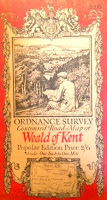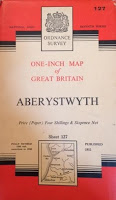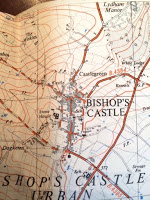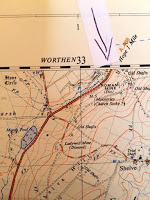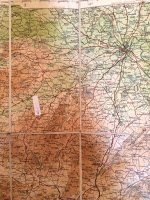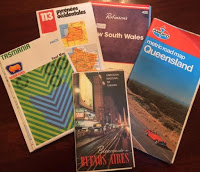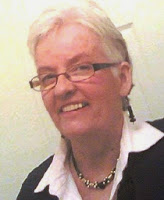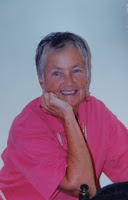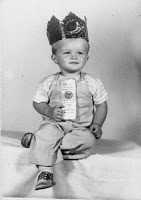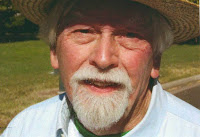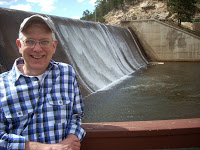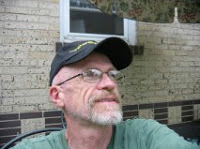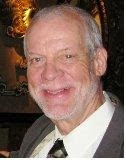Why Me?, by EyM
My Most Meaningful Vacation, by Betsy
the GLBT community including PFLAG, the Denver Women’s Chorus, OLOC (Old
Lesbians Organizing for Change), and the GLBT Community Center. She has been
retired from the human services field for 20 years. Since her retirement, her major
activities have included tennis, camping, traveling, teaching skiing as a
volunteer instructor with the National Sports Center for the Disabled, reading,
writing, and learning. Betsy came out as a lesbian after 25 years of marriage.
She has a close relationship with her three children and four grandchildren.
Betsy says her greatest and most meaningful enjoyment comes from sharing her
life with her partner of 30 years, Gillian Edwards.
Hobbies Past & Present, by Ricky
1948 in Los Angeles, living first in Lawndale and then in Redondo Beach. Just prior to turning 8 years old in 1956, I was
sent to live with my grandparents on their farm in Isanti County, Minnesota for
two years during which time my parents divorced.
mother and stepfather two years later in 1958, I lived first at Emerald Bay and
then at South Lake Tahoe, California, graduating from South Tahoe High School in
1966. After three tours of duty with the
Air Force, I moved to Denver, Colorado where I lived with my wife and four
children until her passing away from complications of breast cancer four days
after the 9-11-2001 terrorist attack.
in the summer of 2010. I find writing
these memories to be therapeutic.
Evil, by Ray S
Workout, by Phillip Hoyle
Hooves, by Pat Gourley
Purple Rage, by Lewis Thompson
beautiful state of Colorado out of my native Kansas by way of Michigan, the
state where I married and had two children while working as an engineer for the
Ford Motor Company. I was married to a wonderful woman for 26 happy years and suddenly
realized that life was passing me by. I figured that I should make a change, as
our offspring were basically on their own and I wasn’t getting any younger.
Luckily, a very attractive and personable man just happened to be crossing my
path at that time, so the change-over was both fortuitous and smooth.
Ice, by Louis Brown
My take on “The Iceman Cometh,” a drama by Eugene O’Neill
The year is 1912 about 10 years after the Boer War. The dramatis personae are all extreme alcoholics and are clinically depressed. They also wax philosophical. The scenes all take place in a bar with a boarding house upstairs, owned by Harry Hope who is also a severe alcoholic and is a doomsday philosopher. His bar and hotel are located in western Greenwich Village (where else?)
In a way, the drinkers are actually rather close to each other – most of them have known each other for years — although they also quarrel frequently and fiercely. In their lengthy exchanges with one another, they try and convince themselves that they are not clinically depressed, that, if only they could work up enough courage, they could/would walk out through the doors of the bar and start a steady job or even develop a career.
Of course, these steady jobs and careers are actually pipe-dreams. Pete Wetjohn is the Dutchman, a veteran of the Boer War (1899-1902). Joe is the one “angry” black man.
As noted above, Harry Hope is the proprietor of the Harry Hope Bar and Hotel and is second in importance as a play character to Theodore Hickman (Hickey).
Some play characters include James Cameron as Jimmy Tomorrow, and there are three prostitutes, Pearl, Margie and Cora. Harry Hope and Hugo are their pimps. All the characters are heavy drinkers (“drunks” or “drunkards”) and party almost constantly in the barroom. Rocky is the Italian night bartender.
All the barroom imbibers, including Harry Hope, proprietor, live for their pipe-dreams. After each pipe-dream tirade, each drinker returns to hitting the bottle, hoping to have a brain-numbing blackout.
The main character, the protagonist, the “hero” of the play is Theodore Hickman (Hickey) who eventually admits he shot his wife Evelyn to death. The reader assumes this was because he had discovered that she was having an affair with the iceman (whence the play’s title).
In a rather verbose but famous soliloquy, pp. 689-702, Hickey tries to make an extremely unconvincing case that he shot his wife to death because he loved her and because he was temporarily insane. Also unconvincing was his argument that he wanted to free Evelyn of her love for him, in which, no matter what he did, including frequenting prostitutes when he was on his hardware salesman journeys, she would always forgive him.
Unforgettable quote (that I still remember from 50 years ago): Harry Hope (note ironic last name), during Hickey’s verbose soliloquy, tells Hickey: “Get it over, you long-winded bastard. You married her [Evelyn], and you caught her cheating with the iceman and you croaked her, and who the hell cares?”
P. 700, Hickey finally admits: “I killed her.” Hickman had forewarned the police, so that, when the moment came, NYC Police Officer Moran was ready and arrested Hickey right after his soliloquy.
Hickey was so guilt-ridden, he expected and welcomed the prospect of suffering capital punishment in the electric chair.
Also in his soliloquy, Hickey preached to his own real inebriated friends that, once you give up your pipe dreams, you will find inner peace and happiness. Of course, Hickey, as preacher, has a credibility problem. The “drunks” interpreted that as meaning suicide was the only answer, and Don Parritt took him up on his correctly or incorrectly interpreted recommendation.
I must say I got the impression that Evelyn and Hickey did not actually live in New York City and P. O. Moran was a NYC police officer so that there might have been an unresolved issue of jurisdiction. This was not resolved in the play.
Another sub-plot revolves around Don Parritt, another of Harry Hope’s roomers in his hotel. Don Parritt had accepted a hefty payment from the Federal government for turning in his own mother who was permanently incarcerated in Federal prison for advocating, as an anarchist, the overthrow of the U. S. government.
Don Parritt also went on and on about how guilty he felt about betraying his own mother for a few silver coins so that, on p. 710, he throws himself out of the window of his rented room.
My reaction to this play was the playwright was matching his play’s themes to the public mood. He wrote the play in 1939 when the public was getting psychologically prepared for World War II, and in 1946 when the play was actually presented to the public, matched their doomsday mood, despite their victory over the Nazi’s. The play was a smashing success.
1 December 2016
About the Author
I was born in 1944, I lived most of my life in New York City, Queens County. I still commute there. I worked for many years as a Caseworker for New York City Human Resources Administration, dealing with mentally impaired clients, then as a social work Supervisor dealing with homeless PWA’s. I have an apartment in Wheat Ridge, CO. I retired in 2002. I have a few interesting stories to tell. My boyfriend Kevin lives in New York City. I graduated Queens College, CUNY, in 1967.
Reading, by Gillian
I was probably lonely as a child. I had good friends at school but when school was out I had no nearby children to play with, and I had no siblings. But I don’t recall ever feeling lonely as I was always accompanied by friends from books. (I originally wrote ‘from fiction’ but as The Bible was one of the few books available to me, I imagine some might take exception to including The Bible as fiction.)
I say few books were available not because of any failure on the part of my family to love books, but because paper was scarce in post-war Britain and so few books were published. There was a library in the local town but that was a long and infrequent bus ride away.
So my personal book collection contained four Winnie the Pooh books, published long before the war and once belonging to my mother, an old and very tattered family Bible, and a book called Mystery at Witchend by Malcolm Saville, a prolific author of children’s books in Britain in the 1940’s and ’50’s.
So I roamed the countryside accompanied sometimes by the roly poly Pooh and a bouncing Tigger, sometimes by all or some of the five children from Witchend who formed The Lone Pine Club and together had many harmless adventures and solved gentle crimes with never a hint of violence. Indeed the only violence I ever read about was in The Bible. But the Jesus who occasionally accompanied me was the gentle fatherly figure depicted in The Children’s Pictorial Bible which we read in Sunday School. Because of one of the pictures in this book, my friend Jesus always had a lamb draped around his neck like a fat wooly scarf. Looking back I rather suspect that my child mind had confused the picture of Jesus with one of the shepherds greeting His birth, but never mind. As Jesus and I frequently walked through fields dotted with grazing sheep my vision was appropriate enough.
Fast forward a few decades. I am in my early forties and finally coming out to myself, and very shortly after, to others. So. I was homosexual. A lesbian. What did that mean? Obviously I knew the meaning of the words, the definition, but what did it mean? To me, to my life. Where did I go from here? I felt very alone. Who could I talk to about all this? My friends might be very supportive, but what could they tell me? No-one I knew would have any answers.
So of course I turned to books and headed for the library. This was before the advent of internet so I searched through the catalog card files, in their long narrow boxes, for the pertinent categories. Although I was ‘out’ to anyone who mattered, I must confess to peeking furtively over my shoulder as I searched the LESBIAN section, the word seeming about a foot high and glaringly obvious to all who passed by.
There was amazingly little available regarding lesbians at that time, fiction or non-fiction.
What little there was, was awful. I rushed home with the few books on the library shelf, avidly read them, and wondered why I had bothered. Beyond depressing, they were just plain frightening. If this was where I was headed, I was in serious trouble. The Well of Loneliness, by Radcliffe Hall, was my introduction to lesbian fiction; one of the most depressing books I have ever read. The title alone, if you know that is the road you are now taking, is enough to to make you rush back in the closet and throw away the key. This book has become something of ‘classic’ in the lesbian world, in the sense that most of us have read it, though not a ‘classic’ in a positive sense as any mention of it is greeted by groans. I don’t recall now the titles of the other few books, but in all of them the lesbian character seemed destined for a life of abject misery, or suicide, or else they are saved by a return to heterosexuality. My reaction to this introduction to lesbian fiction was, essentially, what the hell have I done??
So, lacking new characters to jump from the pages and accompany me, I thought longingly of my childhood buddies. Somehow I didn’t think they would be much help. Pooh Bear would just sink his chubby head further into his honey pot, Tigger and Kanga are too busy bouncing and hopping to listen. Eeyore would say, as always,
‘It doesn’t matter anyway.’
But it does. It matters very much.
Those kids from the heterogeneous, clean-scrubbed families of Witchend, would look ascanse at each other and say,
‘Oh dear oh dear but this is awfully difficult,’
and probably run home to mother.
I, who do not identify as a Christian, actually did have a little chat with Jesus. And He actually helped. Asking myself the question what would Jesus do, I answered myself, with every confidence, that he would love me and accept me whoever and whatever I am.
Pretty soon, I discovered Beebo’s bookstore in Louisville and discovered that there really were positive portrayals of fictional lesbians. Claimed as the first of these is Patricia Highsmith’s The Price of Salt, in which neither of the two women has a nervous breakdown, dies tragically, faces a lonely and desolate future, commits suicide, or returns to being with a male. But by then I no longer had need for fictitious playmates. Women at Beebo’s had introduced me to the life-saving – or at least lesbian-saving – Boulder group TLC, The Lesbian Connection, which in turn introduced me to many wonderful women; real women, who in turn led me to my Beautiful Betsy.
With a real woman like that, who needs fiction?
About the Author
I was born and raised in England. After graduation from college there, I moved to the U.S. and, having discovered Colorado, never left. I have lived in the Denver-Boulder area since 1965, working for 30 years at IBM. I married, raised four stepchildren, then got divorced after finally, in my forties, accepting myself as a lesbian. I have been with my wonderful partner Betsy for thirty years. We have been married since 2013.
